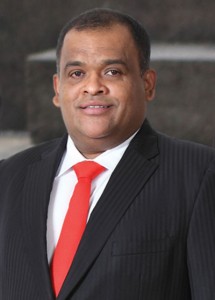Hayleys’ ambitious foray into retail trade
Hayleys, the giant Sri Lankan conglomerate now controlled by businessman Dhammika Perera which acquired Singer Sri Lanka earlier this week, appears to be reverting back to a model which included consumer electronics that failed many years ago.

Mohan Pandithage
The deal which rocked the Colombo stock market on Wednesday and would eventually be worth at least Rs. 15 billion for a 71.2 per cent controlling stake, is one of the largest acquisitions in recent times. For over 25 years (1983-2008), Hayleys was in the consumer electronics business with top brands like Phillips but lost money and exited from this sector.
Market sources said Hayleys was not the first choice for a Singer buyout. Singer had initially made an offer to Browns PLC which turned it down. At this point Hayleys came into the fray.
As the Business Times pieced together the secretive, behind-the-scenes deal which caught brokers flat-footed, it was abundantly clear that the brains behind it was Mr. Perera, who in fact has been driving the group’s development since his ‘dominant entry’ into the company in 2011. Currently he owns 50.44 per cent of the company and is its co-chairman with long-time Hayleys employee, Mohan Pandithage as the chairman.
Despite Hayleys battling a huge debt position and reporting a staggering 91 per cent drop in post-tax profit to Rs. 61 million for the third quarter ending June 2017 against Rs.650 million in the 2016 quarter, Mr. Perera is confident that the Singer acquisition is a ‘good buy’. “Any pitch is a good one for those who can play cricket,” he quipped to the Business Times in brief on-phone comments.
When asked if it’s a wise decision given that the group is already highly geared with borrowings, Mr. Perera noted that ‘business’ is second nature to him and that funding Singer’s acquisition isn’t an issue.
Hayleys debt position as at June 30 was Rs. 48.5 billion (short and long-term debt). This excludes the latest deal worth at least Rs. 15 billion and Rs. 4.9 billion used by the group to acquire Sri Lanka Shipping Co Ltd last month, which would result in a total debt position exceeding Rs. 65 billion as of today.
But officials, who declined to be named, are confident of handling the challenging debt position, by disposing of underperforming assets such as land as one of the measures to fund the Singer deal. “Hayleys has two acres of land behind its head office at Eye Hospital Junction which isn’t utilised. Selling this will fetch the company Rs. 5 billion which is half the acquisition cost,” a source said. Other underutilised assets would also be sold, he said without giving details.
While the group had a foothold in the consumer durables market dealing with lighting products and solutions, photo imaging, healthcare and FMCG products, its core competencies has been in mainly manufacturing and producing for competitive export markets.
The group was strong in sectors like fibre (eco-systems), hand protection, activated carbon (purification products), textiles and plantations. Revenues from these sectors however suffered in recent times but officials say they are confident of a turnaround.
Long-time industry observers say that Hayleys exited from consumer electronics many years ago since it didn’t have the competencies for B2C marketing and was essentially a B2B unit and questions the logic of the latest acquisition given limited skills in this market. The focus seems to be in either a shift to retail and services or equal prominence from these areas compared to being an industrial heavyweight in production and marketing for export.
However others agree that retail trade and consumer marketing is growing and this would have been the rationale for the Singer take-over.

Dhammika Perera
On Friday, the powerful Mr. Perera – whose foray into other big businesses over the past decade is well known – was busy at meetings at Hayleys and didn’t want to divulge too much on the strategy for Singer. He told the Business Times that he’ll announce it ‘soon’, but said that there’s fantastic synergy between Hayleys and singer.
Analysts believe that with Singer on its books, Hayleys turnover will substantially rise. Hayleys officials said that the mega store concept has ‘intrigued’ them, but that it’s too early to comment on possible changes at Singer showrooms. “It will certainly be a different experience,” an official said, adding that Asoka Peiris will continue as CEO Singer.
While Hayleys purchased a 61.7 per stake in Singer for nearly Rs. 11 billion at Rs. 47 per share on Wednesday, agreement was reached with Singer to buy another 9.47 per cent in the next 12 to 15 months. On Friday Singer share price fell to Rs. 45 against Rs. 46 the previous day (Thursday).
So why is one of the world’s biggest brands exiting from largely Asia? Apparently due to a group strategy, the global firm last year sold a 70 per cent stake in the Pakistan unit and the year before, a 40 per cent stake in the Thai unit.
In Sri Lanka, Singer has a strong presence in the washing machines, refrigerators, televisions and luxury and semi furniture segment, among other items competing strongly with competitors like Damro, Abans, Softlogic and, to a lesser extent, Browns.


